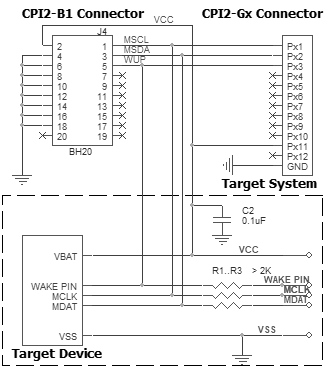Device: PCF7961E [ISP Mode]
- Manufacturer(s): NXP / Philips
- Device type: Microcontroller / 8051
NXP / Philips PCF7961E [ISP Mode] is programmed "in-system", i.e. being installed on a board. The matrix below lists Phyton device programmers that support the PCF7961E [ISP Mode] device in-system programming and appropriate cable-Adapters or device library licenses.
| PCF7961E [ISP Mode] is programmed by | ||
|---|---|---|
| Connection or Adapter | Device programmers | Required license |
| Connection diagrams | CPI2-B1, CPI2-Gx | CPI2-D-NXJN device library license is required |
| Connection diagrams | CPI2-B1-x (preloaded) | CPI2-D-NXJN device library license is required |
| AE-ISP-U1 | ChipProg-481, ChipProg-48 | - |
Recommended CPI2-B1&CPI2-Gx connection (Connection for the NXP PCF79xx devices)

Powering the target device:
There is only one option for powering the targets:
1. The target gets power from the programmer (Vdd). This is possible only if the target does not consume too much energy. A capacity of the target power circuitry should not exceed 50 uF.
Isolating resistors:
Purpose of the resistors is to isolate the programmed chip from rest of target system. Recommended value of resistors is 2k or more. You can also use jumpers instead of the resistors.
ISP characteristics:
1. Programmer''s output capability:
1.1 Vcc - 80 mA with powering from USB and 350mA from external device programmer power supply;
1.2 Vpp - 50 mA;
1.3 logical pins - 5 mA.
2. The cable length should be less then one foot.
/Start is the input signal, active state is 0. This signal works as the Start button on the programmer.
/Error, /Good, /Busy are output logical signals, active state is 0. They indicate the programmer status and work as the corresponding LEDs on the programmer case.
Adapter Connection Table:
Go Back
